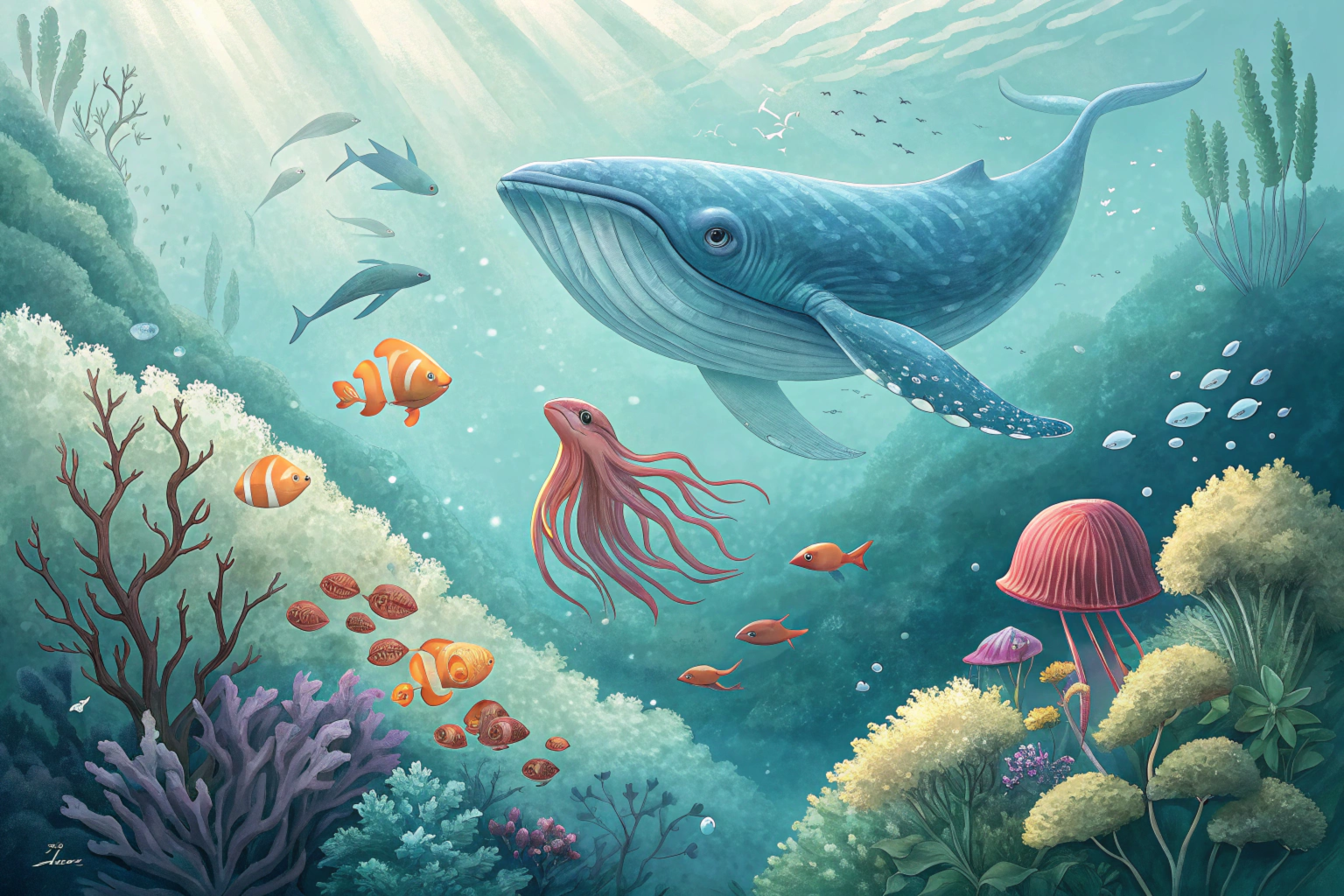The Marvelous World of Undersea Animals
The oceans cover over 70% of Earth’s surface, forming a vast and largely unexplored domain teeming with life. Beneath the waves lies a world so diverse and captivating that scientists estimate millions of species are yet to be discovered. From the dazzling coral reefs to the mysterious depths of the abyss, undersea animals showcase the resilience, adaptability, and beauty of life in ways that often surpass human imagination.
Coral Reefs: Rainforests of the Sea
Coral reefs are among the most vibrant ecosystems on the planet, housing a quarter of all marine species despite covering less than 1% of the ocean floor. Built by tiny coral polyps, these structures provide shelter, food, and breeding grounds for a multitude of species.
Clownfish and Anemones
The clownfish, made famous by its depiction in popular culture, is a reef-dwelling fish that lives in symbiosis with sea anemones. These anemones have stinging tentacles that protect the clownfish from predators, while the clownfish, immune to the stings, helps keep the anemone clean by eating debris and deterring anemone-eating species.
Parrotfish: Architects of Sand
Parrotfish are another fascinating reef inhabitant. These brightly colored fish play a crucial role in shaping coral reef ecosystems by feeding on algae and dead coral. Remarkably, parrotfish produce fine white sand as a byproduct of their digestion. A single parrotfish can create hundreds of pounds of sand each year, contributing to the formation of tropical beaches.
The Open Ocean: Vast and Mysterious
The open ocean, or pelagic zone, is a vast, seemingly empty expanse that hosts an array of unique species adapted to life in the water column.
Jellyfish: Ancient Drifters
Jellyfish are some of the oldest living creatures, with a lineage dating back over 500 million years. These gelatinous animals come in a variety of sizes, from tiny thimble jellies to the enormous lion’s mane jellyfish, whose tentacles can extend over 120 feet. Despite their simplicity, jellyfish exhibit remarkable bioluminescence, which they use to attract prey or deter predators.
Oceanic Sharks: Masters of the Sea
Sharks, often misunderstood as fearsome predators, are vital to maintaining healthy ocean ecosystems. Species like the great white shark, hammerhead, and whale shark dominate the pelagic zone. The whale shark, the largest fish in the ocean, feeds primarily on plankton, illustrating the incredible diversity of feeding strategies among sharks.
The Twilight Zone: A World of Shadows
Beneath the reach of sunlight lies the mesopelagic, or twilight zone, a mysterious layer of the ocean. Here, bioluminescent organisms dominate, creating a mesmerizing display of light in the darkness.
Lanternfish: Tiny Beacons
Lanternfish are among the most abundant vertebrates on Earth, forming massive shoals that migrate vertically each night to feed. Their glowing photophores, small light-producing organs, help them attract mates and confuse predators. These fish are a critical food source for larger predators like tuna and squid.
Vampire Squid: Master of Deception
Despite its name, the vampire squid is a gentle creature. Found in oxygen-depleted zones, it survives by consuming marine snow — a mix of organic debris that sinks from upper layers. This squid’s bioluminescent displays and cloak-like webbing help it evade predators, embodying the ingenuity of deep-sea survival.
Abyssal Zone: The Ocean’s Deepest Mysteries
The abyssal zone, extending from 13,000 to 20,000 feet below the surface, is one of the most inhospitable environments on Earth. Here, life has evolved extraordinary adaptations to cope with immense pressure, frigid temperatures, and complete darkness.
Anglerfish: The Lure of Light
Anglerfish are iconic denizens of the abyss, recognized by their bioluminescent lure that dangles from their heads. This light attracts prey in the dark depths, ensuring the anglerfish’s survival. The species exhibits extreme sexual dimorphism; males are tiny and fuse with females to become permanent mates, a strategy well-suited to the sparse population of the abyss.
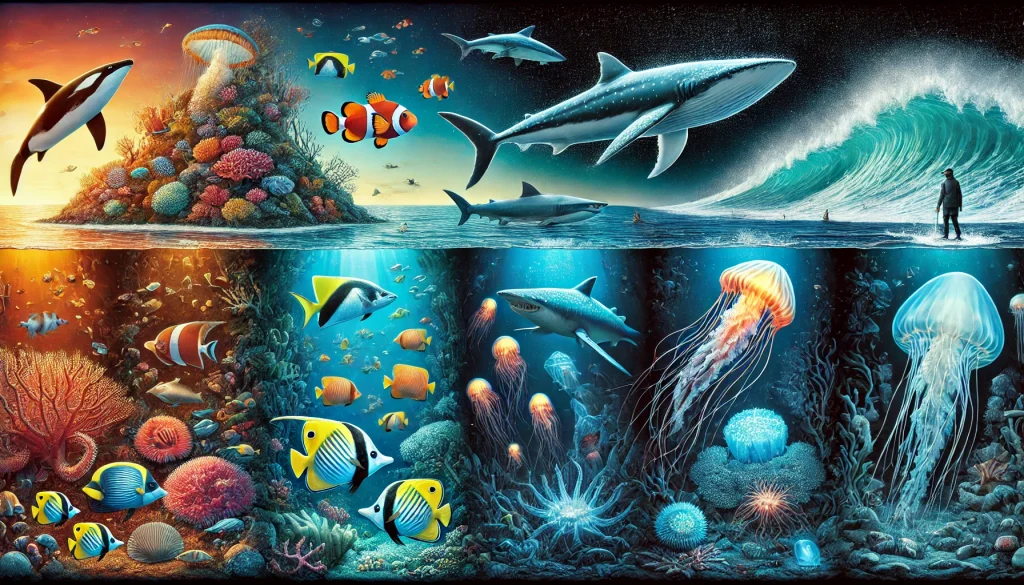
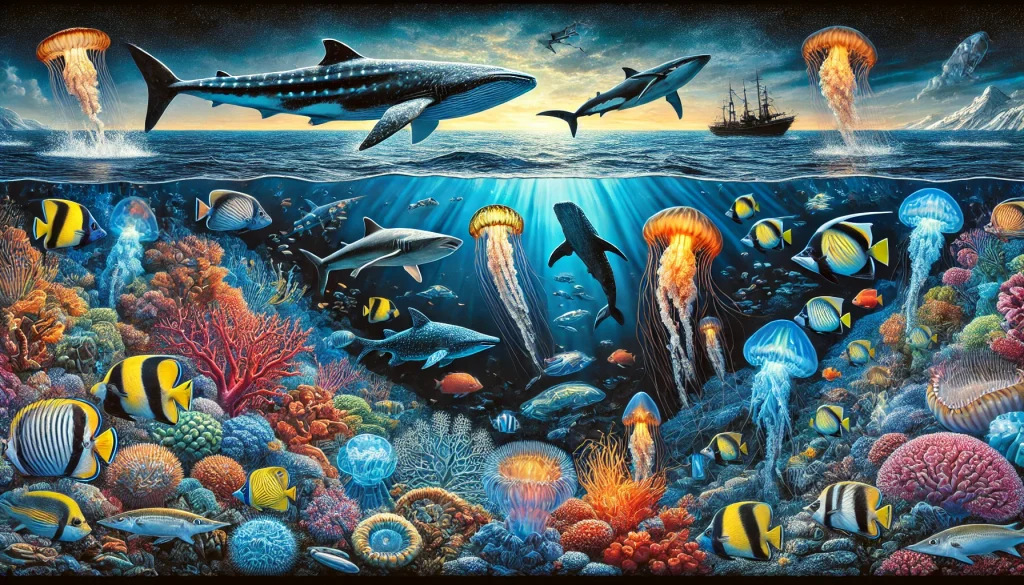
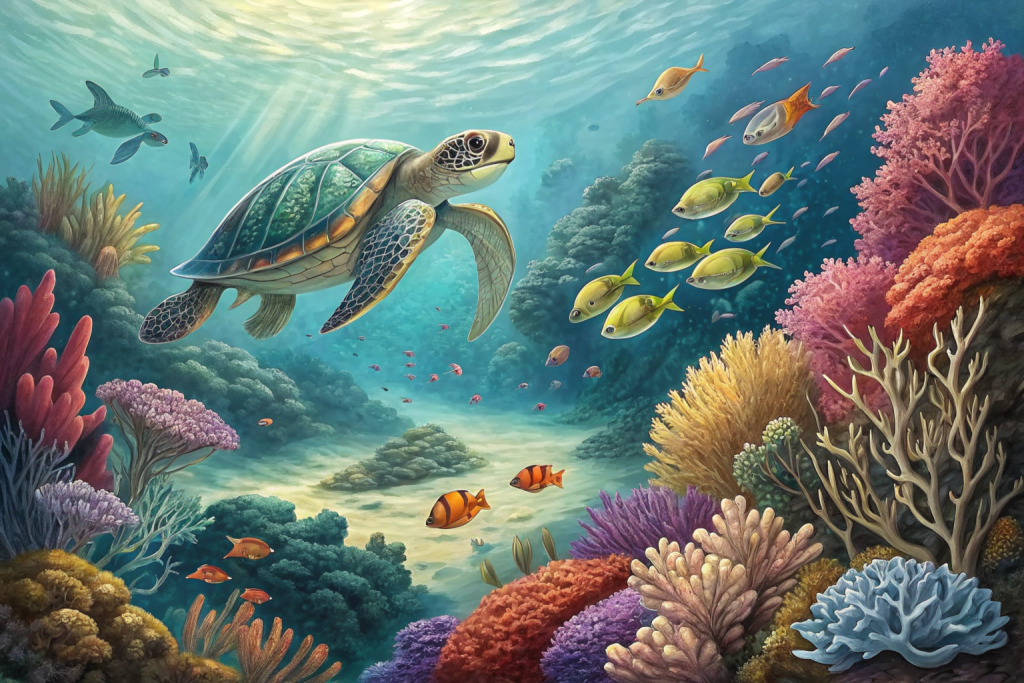
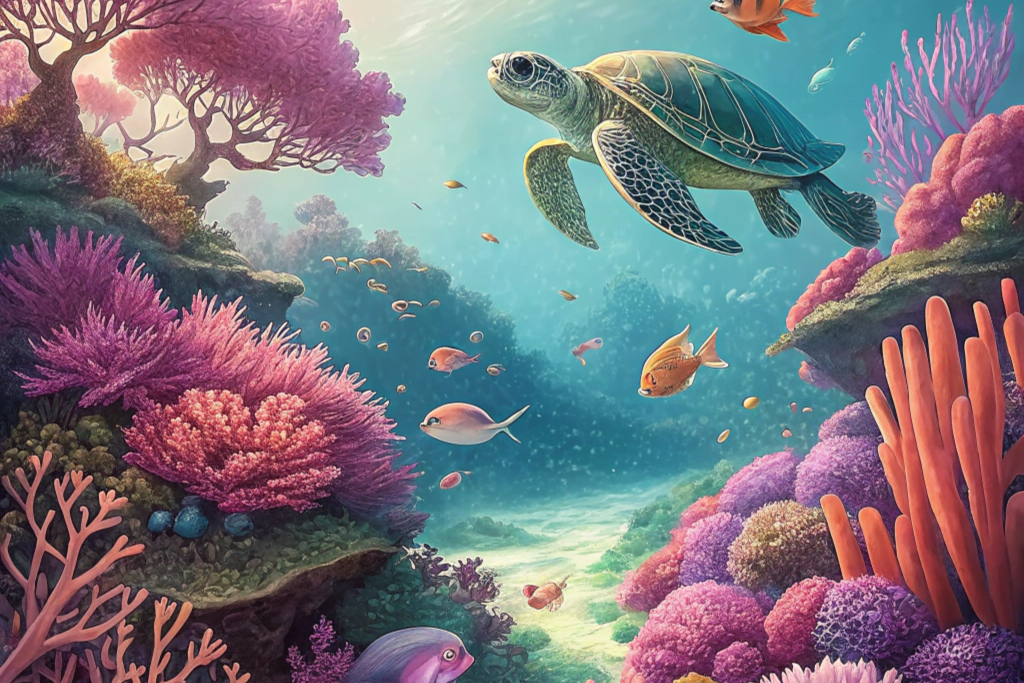
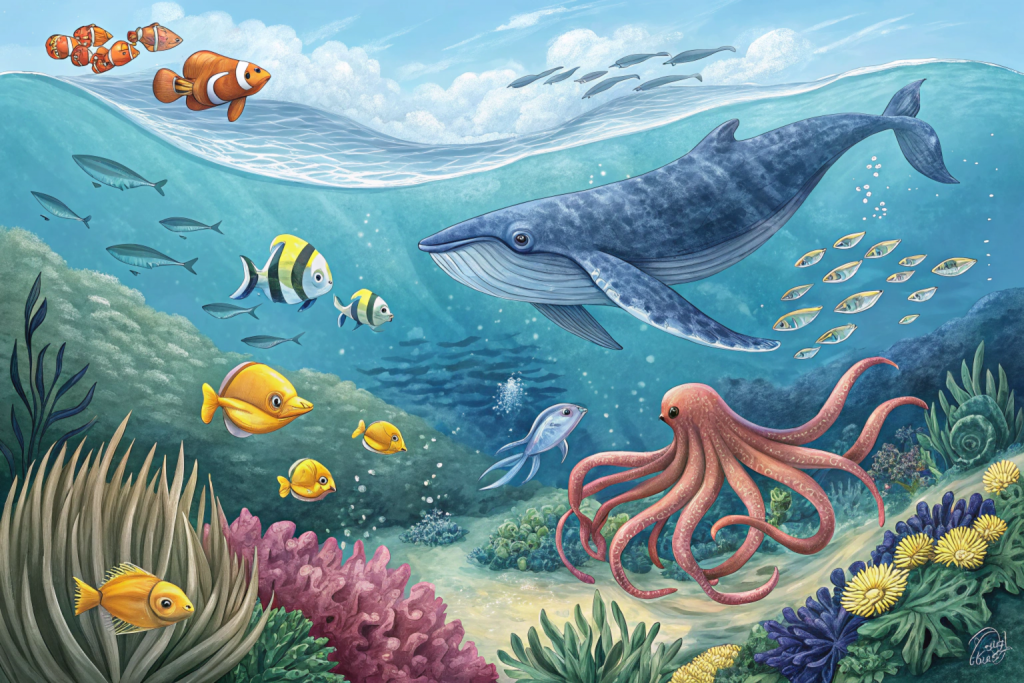
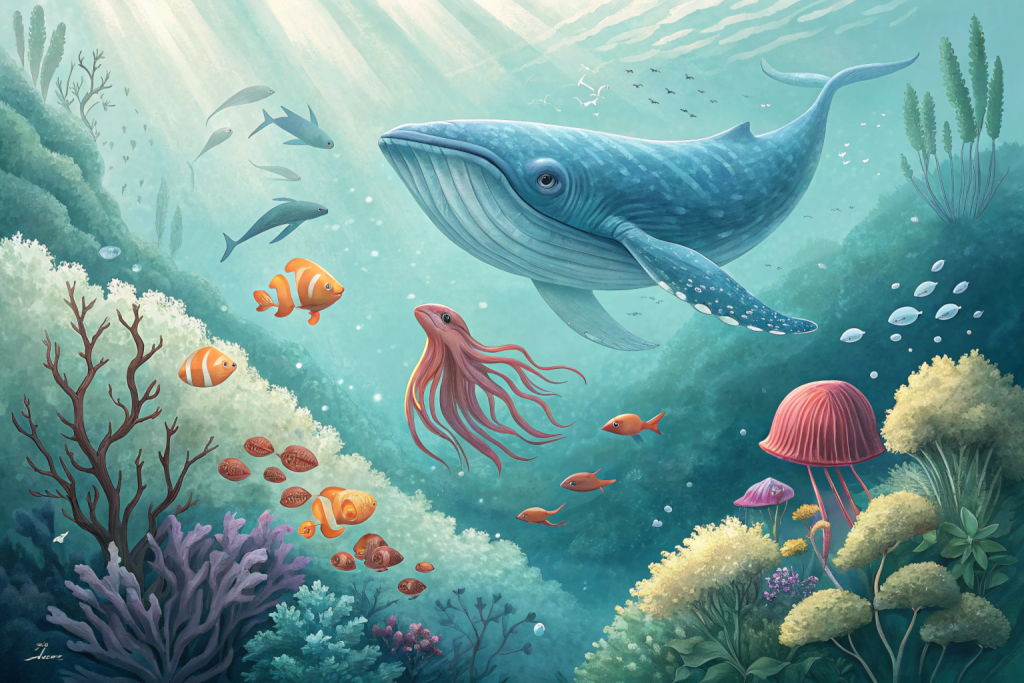
Sea Cucumbers: The Vacuum Cleaners
Sea cucumbers play a critical role in abyssal ecosystems as detritivores, consuming organic material from the seafloor. These creatures recycle nutrients, ensuring the deep ocean remains a functional ecosystem. Some species have developed unique methods of locomotion, such as using modified tube feet to “swim” through the water.
Polar Oceans: Life in the Extremes
The Arctic and Southern Oceans, with their icy waters and extreme conditions, are home to a variety of uniquely adapted marine species.
Narwhals: Unicorns of the Sea
Narwhals, often referred to as the “unicorns of the sea,” are Arctic whales known for their long, spiral tusks. These tusks, which are elongated teeth, are thought to play a role in sensory perception or mating displays. Narwhals rely on echolocation to navigate and hunt in dark, icy waters.
Emperor Penguins: Masters of Survival
In the Antarctic, emperor penguins endure some of the harshest conditions on Earth. These flightless birds huddle together for warmth during brutal winters and undertake long treks across the ice to reach their breeding grounds. Underwater, they are agile swimmers, capable of diving to depths of over 1,800 feet in search of fish and krill.
Symbiosis and Collaboration in the Sea
Marine ecosystems are rife with examples of symbiotic relationships that illustrate the interconnectedness of life beneath the waves.
Cleaner Wrasses and Their Clients
Cleaner wrasses are small fish that set up “cleaning stations” on coral reefs. Larger fish visit these stations to have parasites and dead skin removed. The wrasses benefit from a steady food supply, while their “clients” enjoy improved health.
Pistol Shrimp and Gobies
In sandy seabeds, pistol shrimp and gobies form a remarkable partnership. The shrimp digs and maintains a burrow, providing shelter for both animals. In return, the goby acts as a lookout, using its keen eyesight to warn the shrimp of approaching predators.
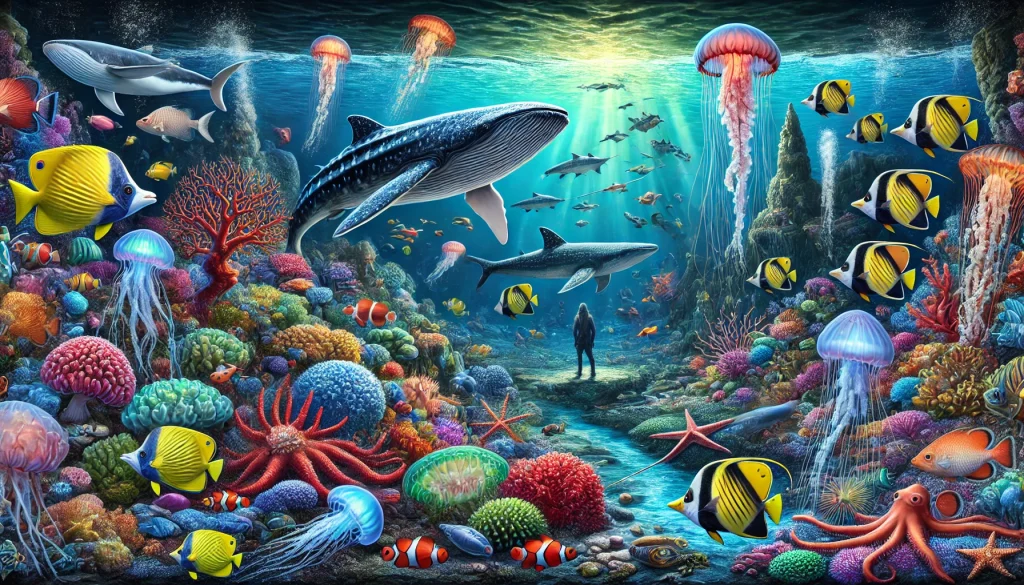
Threats to Undersea Animals
Despite their resilience, marine species face numerous threats from human activities and climate change.
Overfishing
Overfishing has led to dramatic declines in populations of species like tuna, cod, and sharks. The removal of top predators disrupts marine food webs and can lead to ecosystem collapse.
Coral Bleaching
Rising sea temperatures and ocean acidification are causing widespread coral bleaching, where corals expel the symbiotic algae that provide them with energy. Without these algae, corals lose their color and struggle to survive, endangering countless species that depend on reef habitats.
Pollution
Plastic pollution, oil spills, and chemical runoff have devastating effects on marine life. Animals such as sea turtles and seabirds often ingest plastic debris, mistaking it for food, leading to injury or death.
Climate Change
The warming of oceans and melting of polar ice are altering habitats and migration patterns. Species like polar bears and walruses are struggling to find stable sea ice, while others, such as tropical fish, face shrinking habitats.
The Importance of Conservation
Protecting undersea animals and their habitats is vital for maintaining biodiversity and ensuring the health of the planet. Marine ecosystems provide essential services, including carbon sequestration, oxygen production, and food resources for billions of people.
Marine Protected Areas
Establishing marine protected areas (MPAs) is a crucial step in conserving biodiversity. MPAs limit human activities like fishing and drilling, allowing ecosystems to recover and thrive.
Sustainable Practices
Adopting sustainable fishing practices and reducing plastic waste can significantly mitigate human impact on the oceans. Consumers can support these efforts by choosing sustainably sourced seafood and reducing single-use plastics.
Research and Awareness
Continued research and public awareness campaigns are essential for understanding and addressing the challenges facing marine life. Citizen science initiatives, such as beach cleanups and wildlife monitoring programs, empower individuals to contribute to conservation efforts.
The Future of Ocean Exploration
Despite centuries of exploration, the oceans remain one of the least understood parts of the planet. Advances in technology, such as remotely operated vehicles (ROVs) and autonomous underwater drones, are opening new frontiers for discovery. From uncovering new species to mapping underwater landscapes, these efforts promise to deepen our appreciation of the oceans and their inhabitants.
Conclusion
Undersea animals represent a remarkable tapestry of life, showcasing the resilience and adaptability of nature. From the vibrant coral reefs to the mysterious abyssal plains, each species plays a unique role in maintaining the balance of marine ecosystems. As stewards of the planet, it is our responsibility to protect these creatures and their habitats for future generations. By embracing conservation efforts and fostering a deeper connection with the oceans, we can ensure that the wonders of the undersea world continue to inspire and sustain life on Earth.
Kawaii Coloring Pages For Kids
Cute kawaii Sweets Candy Ice cream Cup Cakes Free Coloring pages for kids
Free coloring pages for adults Spring flowers and butterflies
Free Coloring Pages for Kids About Space and Astronauts
Free Coloring ages Of Easter Bunnies and Spring Holidays For Kids
FREE PRINTABLES FOR KIDS UNDER SEA COLORING PAGES
Free Coloring Pages For Kids Based On Super Mario Character | Free Printables For Kids
Free Coloring Pages For kids| Animals Coloring Pages
Free Coloring Pages Of Cute Animals Simple For Kids
Cartoon Baby Girl Coloring Pages For Kids
FREE COLORING PAGES FOR ADULTS
“Free Mandala Coloring Pages for adults: Unlock Your Creativity with Relaxing Mandala”
“Discover the Deep Sea: Free Printable Under-the-Sea Coloring Pages for Adults”
Free Mandala Coloring Pages of Animal Faces
Free Tropical Coloring Pages for Adults
Coloring Pages for Kids Of Pirate Life

